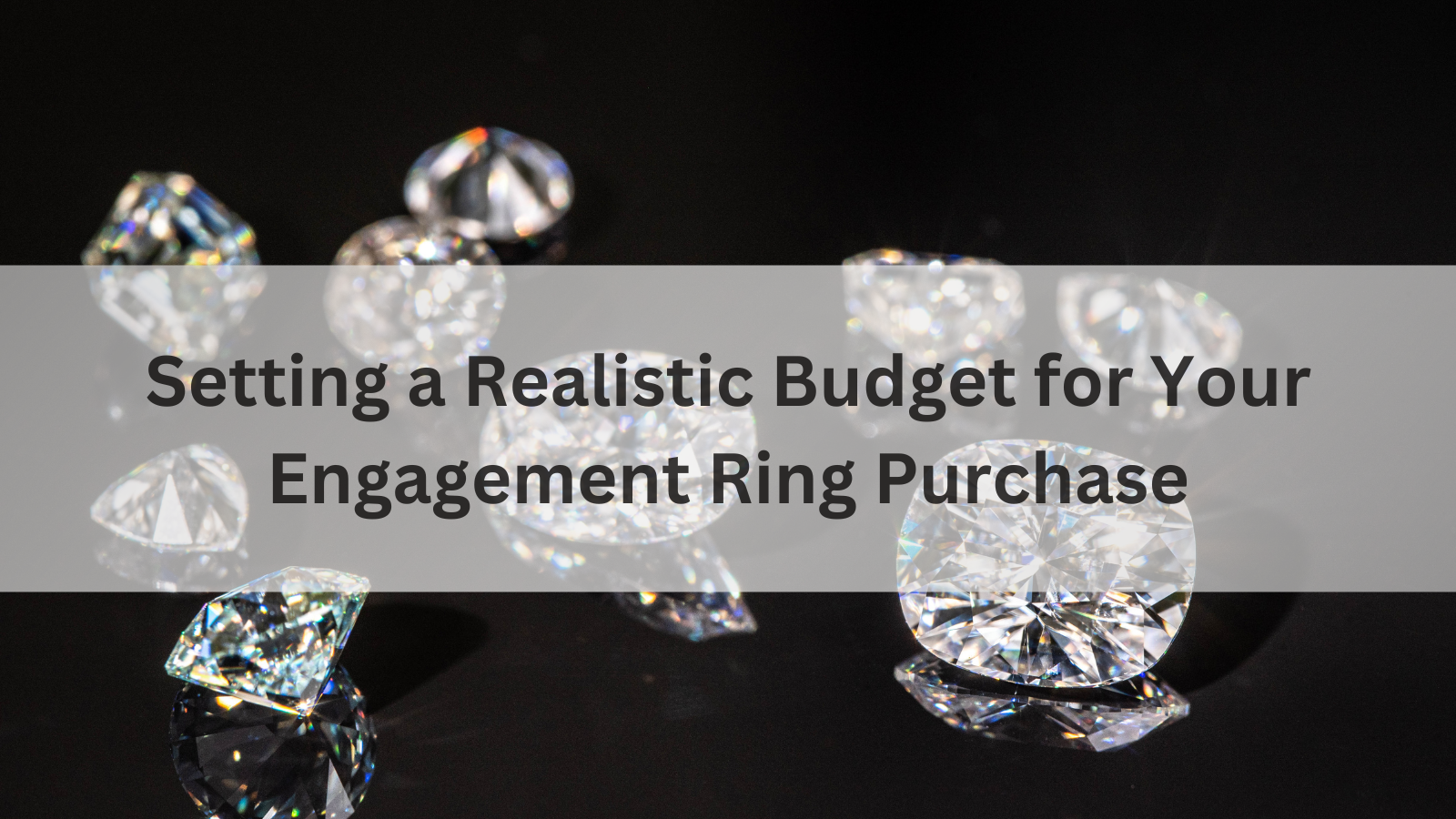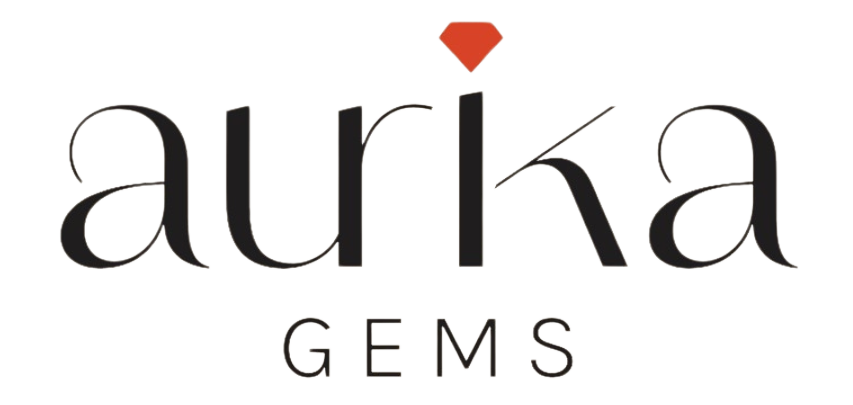
Setting a Budget for Average Engagement Ring Cost
Choosing an engagement ring is a significant moment in any relationship, symbolizing love, commitment, and the beginning of a lifelong journey together. However, the process of purchasing an engagement ring comes with many decisions, and one of the most crucial is determining a realistic budget. Setting the right budget ensures you get a beautiful ring that suits both your partner’s style and your financial situation.
This guide will help you understand the factors that go into budgeting for an engagement ring, from understanding diamond pricing to practical tips for staying within your financial limits.
Table of Contents:
- Why Setting a Budget is Important
- The Average Engagement Ring Cost
- Factors That Influence the Price of an Engagement Ring
- Diamond Size (Carat)
- Diamond Quality (4Cs: Cut, Color, Clarity, Carat)
- Metal Choices
- Ring Design and Setting
- How Much Should You Spend on an Engagement Ring?
- The Two-Month Salary Rule: Myth or Reality?
- Creating a Personalized Budget
- Money-Saving Tips Without Sacrificing Quality
- Lab-Grown Diamonds vs. Natural Diamonds: Impact on Budget
- Financing Options for Your Engagement Ring
- Conclusion: Balancing Love and Budget
1. Why Setting a Budget is Important
Setting a clear budget before you start shopping for an engagement ring is essential for several reasons:
- Avoid Overspending: The excitement of picking the perfect ring can lead to emotional spending. Having a budget keeps you grounded.
- Focus on What Matters: Knowing how much you can spend helps you prioritize the features that are most important, such as diamond size or ring style.
- Peace of Mind: Sticking to a budget ensures that your engagement doesn’t begin with financial stress. The ring is just the beginning of many financial decisions as a couple, so it's important to start on a solid footing.
2. The Average Cost of an Engagement Ring uk
As of recent data, the Average Engagement Ring Cost ranges between $5,000 to $6,000. However, this number can vary significantly depending on your location, the materials used, and personal preferences. Keep in mind that this is just a benchmark, and there’s no set rule for how much you should spend.
3. Factors That Influence the Price of an Engagement Ring
Several factors play a role in determining the price of an engagement ring. Understanding these can help you make informed choices and find the perfect balance between quality and affordability.
Diamond Size (Carat)
The size of the diamond is a major factor in its price. Diamonds are priced per carat, and larger stones cost exponentially more. For example, a 2-carat diamond may be significantly more expensive than a 1.5-carat stone, even if they have the same quality.
- Tip: Consider diamonds that are just under full-carat weights (e.g., 0.9 carats instead of 1.0 carats) to save money without sacrificing much in size.
Diamond Quality (4Cs: Cut, Color, Clarity, Carat)
The 4Cs—Cut, Color, Clarity, and Carat—are essential in determining the value of a diamond:
- Cut: The cut of a diamond affects its brilliance. A well-cut diamond reflects light beautifully, even if it’s smaller or lower in color or clarity.
- Color: Diamonds are graded from D (colorless) to Z (light yellow or brown). Colorless diamonds are rarer and more expensive.
- Clarity: Diamonds with fewer inclusions and blemishes are more valuable, but you can opt for slightly lower clarity if imperfections are not visible to the naked eye.
- Carat: As mentioned, carat weight affects the diamond’s size and price. Finding a balance between carat size and the other Cs can help you stick to your budget.
Metal Choices
The metal you choose for the ring band can impact the overall price. Popular choices include:
- Platinum: Durable and hypoallergenic but also more expensive.
- White Gold: A popular and more affordable alternative to platinum.
- Yellow Gold: Classic and timeless, often slightly less expensive than white gold or platinum.
- Rose Gold: Trendy and romantic, usually similar in price to yellow gold.
Ring Design and Setting
The complexity of the ring design and setting also influences the cost. A solitaire setting with a single diamond is generally more affordable than intricate settings like halo, pavé, or three-stone designs that feature multiple diamonds.
- Tip: Opting for a simpler design can allow you to allocate more of your budget toward a higher-quality center stone.
4. How Much Should You Spend on an Engagement Ring?
There’s no one-size-fits-all answer to this question. The amount you should spend depends on your financial situation, your partner’s expectations, and your long-term financial goals. Below are some guidelines to help you decide.
The Two-Month Salary Rule: Myth or Reality?
You’ve probably heard the traditional advice that you should spend two months' salary on an engagement ring. This guideline originated from a marketing campaign and is not necessarily the best advice for everyone.
- Reality: Your budget should reflect what you’re comfortable spending. For some, two months' salary might be reasonable, but for others, it may lead to unnecessary financial strain. Focus on finding a balance that fits your lifestyle.
Creating a Personalized Budget
Here’s how you can create a personalized budget for your engagement ring:
- Assess Your Financial Situation: Consider your current income, savings, and future financial goals. How much are you willing to allocate without affecting other important financial priorities?
- Discuss Expectations: If possible, have an open conversation with your partner about their expectations. This can prevent any misunderstandings and ensure the ring aligns with their desires.
- Set a Budget Range: Instead of a fixed amount, consider setting a range (e.g., $3,000 to $5,000). This gives you flexibility when shopping.
- Plan for Other Expenses: Remember, the engagement ring isn’t the only cost. Future wedding expenses, honeymoon plans, and even saving for a home are other factors to keep in mind when determining your budget.
5. Money-Saving Tips Without Sacrificing Quality
Sticking to a budget doesn’t mean you have to compromise on quality. Here are some ways to maximize value while staying within your financial limits:
- Choose Slightly Lower Grades: Opt for slightly lower grades in clarity and color (e.g., G-H color or SI1-SI2 clarity) that still look great but are less expensive than higher-grade diamonds.
- Prioritize Cut: A well-cut diamond can appear more brilliant and beautiful than a larger stone with poorer cut quality.
- Consider Alternative Gemstones: Diamonds are traditional, but gemstones like sapphires, emeralds, or morganites can offer a stunning and more affordable alternative.
- Go for Lab-Grown Diamonds: As mentioned earlier, lab-grown diamonds offer the same brilliance and quality as natural diamonds at a lower cost.
6. Lab-Grown Diamonds vs. Natural Diamonds: Impact on Budget
One of the most significant factors affecting your budget is whether you choose a lab-grown diamond or a natural diamond.
- Lab-Grown Diamonds: These diamonds are created in a controlled environment but are identical to natural diamonds in terms of chemical composition and appearance. They typically cost 30-40% less than natural diamonds, making them an excellent option for those on a budget.
- Natural Diamonds: Mined diamonds are more traditional and often hold higher resale value. However, they come at a higher price due to their rarity.
Both options have their pros and cons, but if you’re looking to get a high-quality diamond within a budget, lab-grown diamonds are a fantastic choice.
7. Financing Options for Your Engagement Ring
If you’ve found the perfect ring but it exceeds your immediate budget, financing options can help spread the cost over time. Here are some common financing methods:
- Jeweler Financing: Many jewelers offer in-house financing with zero-interest payment plans. This allows you to pay off the ring over several months or years without additional interest charges.
- Credit Cards: Using a low-interest credit card can be another way to finance the purchase. However, be cautious of high interest rates and ensure you can make timely payments.
- Personal Loans: Some people opt for a personal loan from a bank or credit union to cover the cost of the ring. Personal loans typically offer lower interest rates than credit cards, making them a viable option if you need to borrow a larger amount.
- Savings Plan: If you prefer not to finance, you can set up a savings plan to gradually save for the ring over time. This allows you to avoid debt and pay in full when you’re ready to make the purchase.
Read More:
- Introduction to Engagement Rings
- Types of Engagement Rings
- Choosing the Right Metal
- Understanding Diamond Shapes and Cuts
- The 4 Cs of Diamonds
- Custom vs. Ready-Made Engagement Rings
- How to Determine Your Ring Size
- Ethical and Sustainable Options
- How to Care for Your Engagement Ring
8. Conclusion: Balancing Love and Budget
When it comes to buying an engagement ring, the most important factor is not the price tag, but the thought and love that goes into choosing a ring that represents your commitment. By setting a realistic budget and understanding the key factors that influence diamond pricing, you can find a ring that’s beautiful, meaningful, and financially manageable.
Remember, your engagement ring is a symbol of your love story. Whether you choose a lab-grown diamond to save money or go for a vintage-inspired setting, the ring should reflect your partner's personality and the unique bond you share.


